Ivan Meštrović, sculptor and architect, originally from Croatia, studied in Split and Vienna. His style was influenced by the Vienna Secession and Art Nouveau, but also the naturalism of the French sculptor Auguste Rodin and ancient architecture. The theme of Ivan Meštrović's works is closely related to his political principles of Yugoslavia at the time of the creation of the Kingdom of Serbs, Croats, and Slovenes, which became the Kingdom of Yugoslavia in 1929. Parallel to that, sculptures with religious themes have a place of honor in his oeuvre.
His choice of characters covered the characteristic epic narrative symbols of all the people who lived in this area. Monuments to Marko Kraljević, Kosovo maiden, Obilić - represent the Serbian narrative in the newly formed state called Vidovdanski fragments. The sculpture of Gregory of Nin in Varaždin, Jurij Dalmatinac in Šibenik, and the Monument to the Unknown Hero in Belgrade were supposed to unite the cultural space in a common state. In Belgrade, his Victor on Kalemegdan was installed, which is today the city's trademark, and a little further on, the Monument of Gratitude to France.
The trademark of his architecture is sculpture - caryatide modeled on ancient Greek temples. These female characters are used for different purposes, among other things, as a performance of the nations that create a new state.
After the First World War, he introduced in his opus religious topics and beautiful sculptures of musicians who played interesting instruments.
Wooden reliefs from the religious opus arose under the influence of Byzantine and Gothic Arts.
As an architect, Ivan Meštrović left the Church of Our Angel, a monument to the Unknown Hero in Zagreb, Croatia, the Family Palace- Ivan Meštrović Gallery, the Church of the Most Holy Redeemer in Otavica- or Family Mausoleum Meštrović, Njegoš Mausoleum Lovcen in Montenegro.
Unfinished Vidovdan Temple as a study for further works.
Exhibition at the National Museum in Belgrade 2020. presented most of the work held in the museum vault. Model of the Unfinished Project of the Serbian Pavilion from the International Exhibition held in Rome, known as the Vidovdan Temple from 1912. Which was supposed to be built in Kosovo, is kept in the National Museum in Krusevac. For this project, Meštrović received a reward in Rome, where he remained for the next 4 years to study the ancient sculpture.
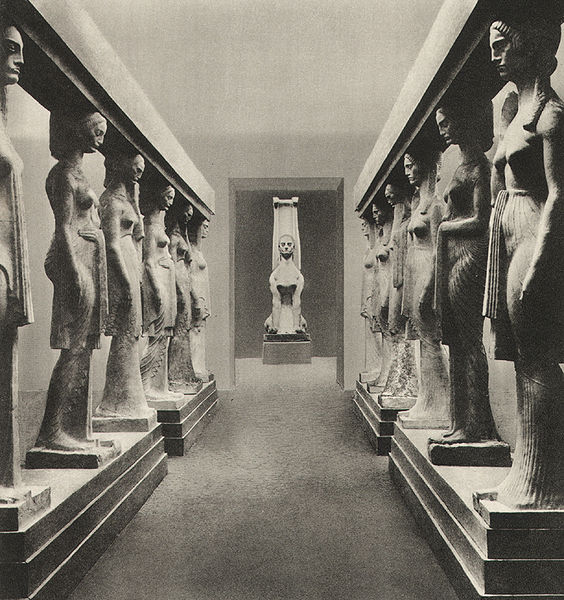
The symbolism woven into the Vidovdan Temple project determined the form and volume of the facility. Above the main entrance was planned with a caryatid tower in 5 levels. It was a play to mark five centuries of Turkish slavery. In the central part of the temple, the sculpture of the Sphinx- is a "silent witness of the past centuries or the puzzle of the future of the Serbian tribe". The Sphinx sculpture belongs to Art Nouveau topics, through which incredible imagination and decoration are expressed. Below the main dome is a sculpture of the blind musician, and on the sides are sculptures of Kraljević Marko, Miloš Obilić, Kosovo maiden, and others from this Opus. The video placed at the beginning of the text shows these sculptures - the main exhibits at the displayed exhibition.
Ivan Meštrović is a sculptor and architect who has set the standard in creating public representative facilities, unattainable for other artists and architects.
The first architectural venture
The first architectural work of Meštrović is the church of Our Lady of Angels in the Parish of Dubrovnik, Croatia. It was built on the village of the old cemetery church of St. Rocco of Protector Cavtat. The highest point of the peninsula was chosen.
From the Vidovdan temple project, he takes over the octagonal form of central space and the external appearance of the dome. The entrances are accentuated with triangular tympanone portals, directly associated with antique temples. Caryatide materialized for the first time in this facility. Decorative reliefs on a frieze that improve the building stylishly belong to secession. And this can also be attributed to the style in which sculptures were created.
The interior of the dome is very interesting. At first glance, it resembles coffered ceilings (geometrically divided into squares), the division was made by placing portraits of angels according to the correct geometric pattern.
Material for making this church. of the Račić family tomb, is the Brac stone. In this way, the sculptor managed to assimilate the object into the natural environment, giving it a dominant color from the landscape.
Monument to the Unknown Hero at Avala, Belgrade
The next project on which sculptor and architect Ivan Meštrović was engaged was the Monument to the Unknown Hero at Avala, in the vicinity of Belgrade. Here, Meštrović used the symbolism he designed for the Vidovdan Temple. The simple object of the mausoleum is placed on 5 pedestals (high steps). This is how the 5 centuries of Turkish slavery are represented, which was designed for the Vidovdan Temple as a tower with 5 levels decorated with caryatids. Here, that idea is refined, the levels are simple and cubic, and the mausoleum itself is decorated inside with 8 caryatids. The shape of this object has a model in early antique tombs especially in the tomb of the Persian ruler Cyrus on the territory of today's Iran.
Caryatids (sculptures of women carrying burdens on their heads) represent the mothers of fallen fighters. At the same time, they represent the ideas of Yugoslavia because each caryatid is in the costume of the people of the Kingdom of Yugoslavia.
The monument was built in 1938. by order of King Alexander I Karadjordjević of the Kingdom of Yugoslavia.
Departure from Yugoslavia
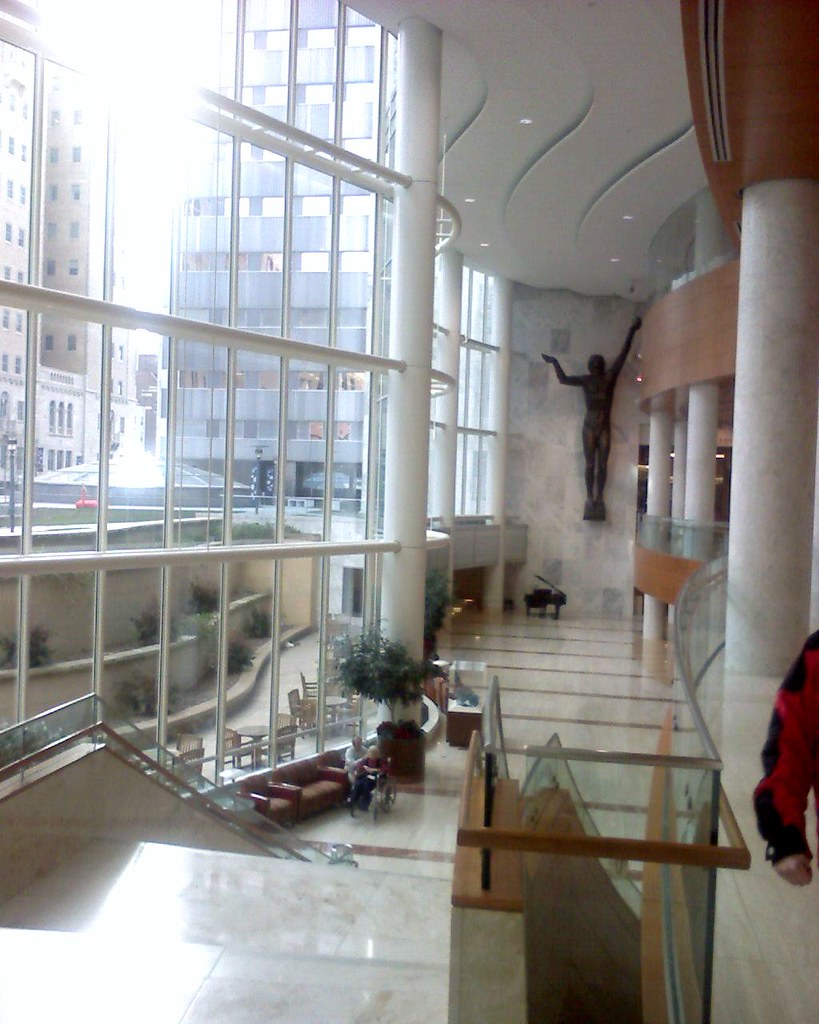
“Gonda lobby” by bdunnette is licensed under CC BY-SA 2.0.
The times in which he lived and created brought constant upheavals. Unification and formation of a new state, World War I, and World War II moved Meštrović from place to place. At the beginning of World War II, his first wife, a Jew, was killed by the fascists. After serving three and a half months in prison, Meštrović escaped from Croatia under the pretext of going to the Venice Biennale.
He goes to the USA where he stays for the rest of his life. Very soon after his arrival, he set up an exhibition at the Metropolitan Museum in New York. That exhibition was a great precedent because the Metropolitan Museum could not exhibit the works of living artists. He teaches at the University of Syracuse. He leaves behind a sculpture of the Native American Archer on horseback in one of Chicago's city squares. He commissioned the sculpture Man and Freedom in Minnesota for the famous Mayo Clinic.
A Yugoslav nationality by conviction was also a monarchist, he never accepted the communist government. His deep religious feelings led him as far as possible from the new communist government. In his opus, there are 30 reliefs with religious themes. He used his only visit to Yugoslavia to support Alojz Stepinac, a Catholic cardinal whom he believed was a victim of communist propaganda.
Mausoleum of Petar Petrović Njegoš, Montenegro
Another masterpiece in which sculptor and architect Ivan Meštrović left his distinctive mark.
The history of the creation of this mausoleum, which is located at the highest point of the Lovćen National Park in Montenegro, is interesting. The first designs were ordered by King Aleksandar I Karađorđević from Meštrović as early as 1924. The lack of funds caused the abandonment of construction. The following year, a copy of Njegoš's covenant church, destroyed during shelling in World War I, was erected on that spot.
After World War II, in communist Yugoslavia in 1951. on the occasion of the centenary of Njegoš's death, the question of building a mausoleum is raised. An unsuccessful competition for a new solution was organized and the authorities decided to contact Ivan Meštrović through diplomatic missions in the USA. He agrees to finish the project he started and organizes collaborators in Yugoslavia who will carry out this project. The caryatid sculptures were completed in 1958, but construction approval would wait another 10 years. The mausoleum was inaugurated only in 1974.
The construction of this mausoleum was accompanied by enormous resistance from the very beginning. The Orthodox Church has clearly expressed its negative attitude towards this building. A commission composed of art historians and well-known intellectuals was formed. The writer Miroslav Krleža was strongly against this idea, even disputing its artistic value.
The stylistic features of the architecture of Njegoš Mausoleum
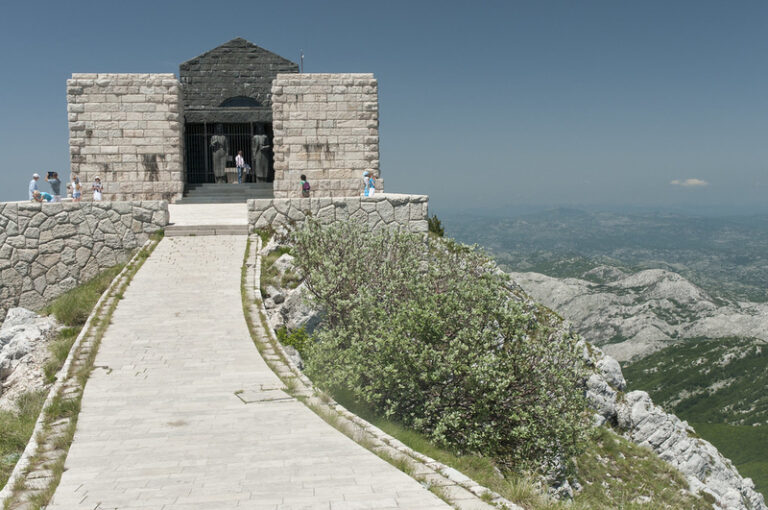
“Njegos Mausoleum, Lovcen National Park, Montenegro” by travelmag.com is licensed under CC BY 2.0.
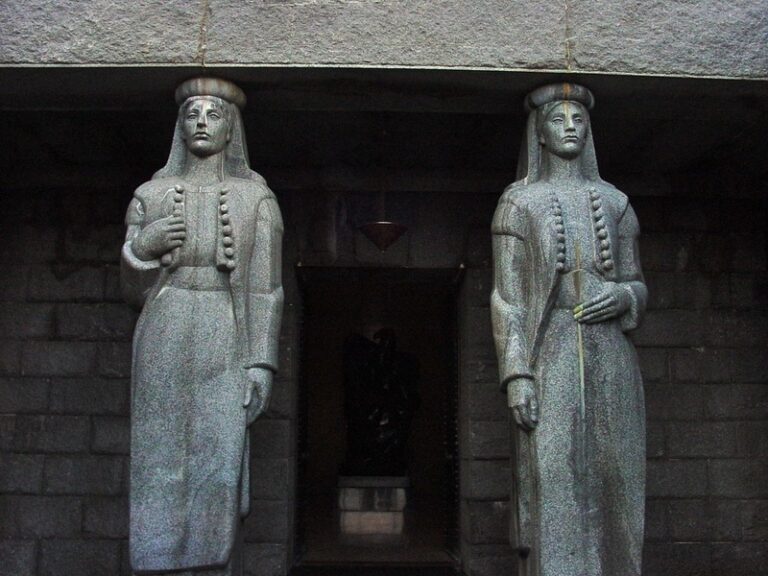
“Mavzolej na Lovčenu” by Darij & Ana is licensed under CC BY 2.0.
Njegoš's mausoleum is a logical sequence of Meštrović's previous works. He remained faithful to the characteristics of his architectural expression. An extremely simple design structure has been used again. The cube of the mausoleum is lined with dark stone, surrounded by walls of light stone, which, due to the roughness of the processing, resemble the walls of a ruined church. This envelope forms a vestibule and is thus reminiscent of ancient patterns, sort of peristyle The resemblance with ancient models is evident. Meštrović took colonnades and caryatids from Greek architecture history, and local stone and massive walls without openings from the Montenegrin architectural heritage. A courtyard with a colonnade of powerful, rough stone blocks is the vestibule of the chapel. As a contrast to that rough massiveness, caryatids of Montenegrin women, mothers, and daughters, in folk costumes were placed. They mark the entrance. Inside the chapel is a sculpture of Njegoš with a soaring eagle.
The remains of the greatest poet and philosopher of Montenegro are located in a crypt with a gilded vault on the lower level.
Considering that Meštrović himself did not live on the territory of Yugoslavia at that time, the creation of sculptures based on his designs was carried out by his associate Andrija Krstulović.




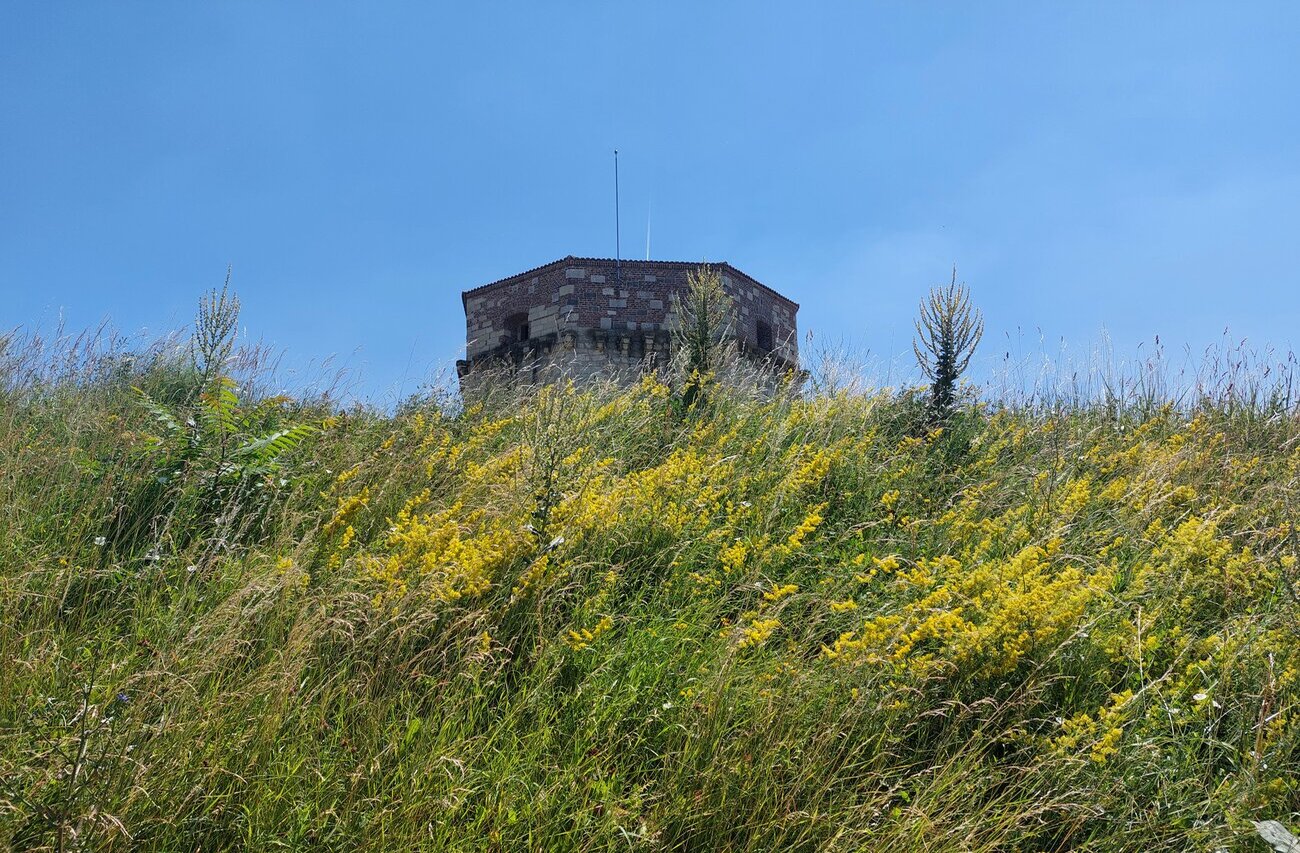
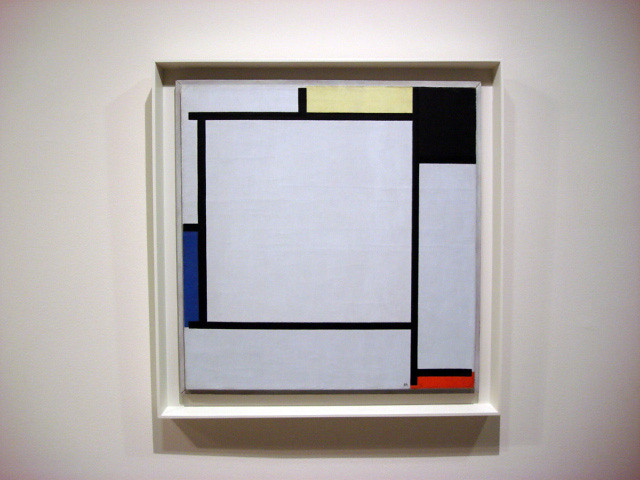
Pingback: Kula Nebojša na Kalemegdanu spaja vekove ⋆ ARXXITEKTURA